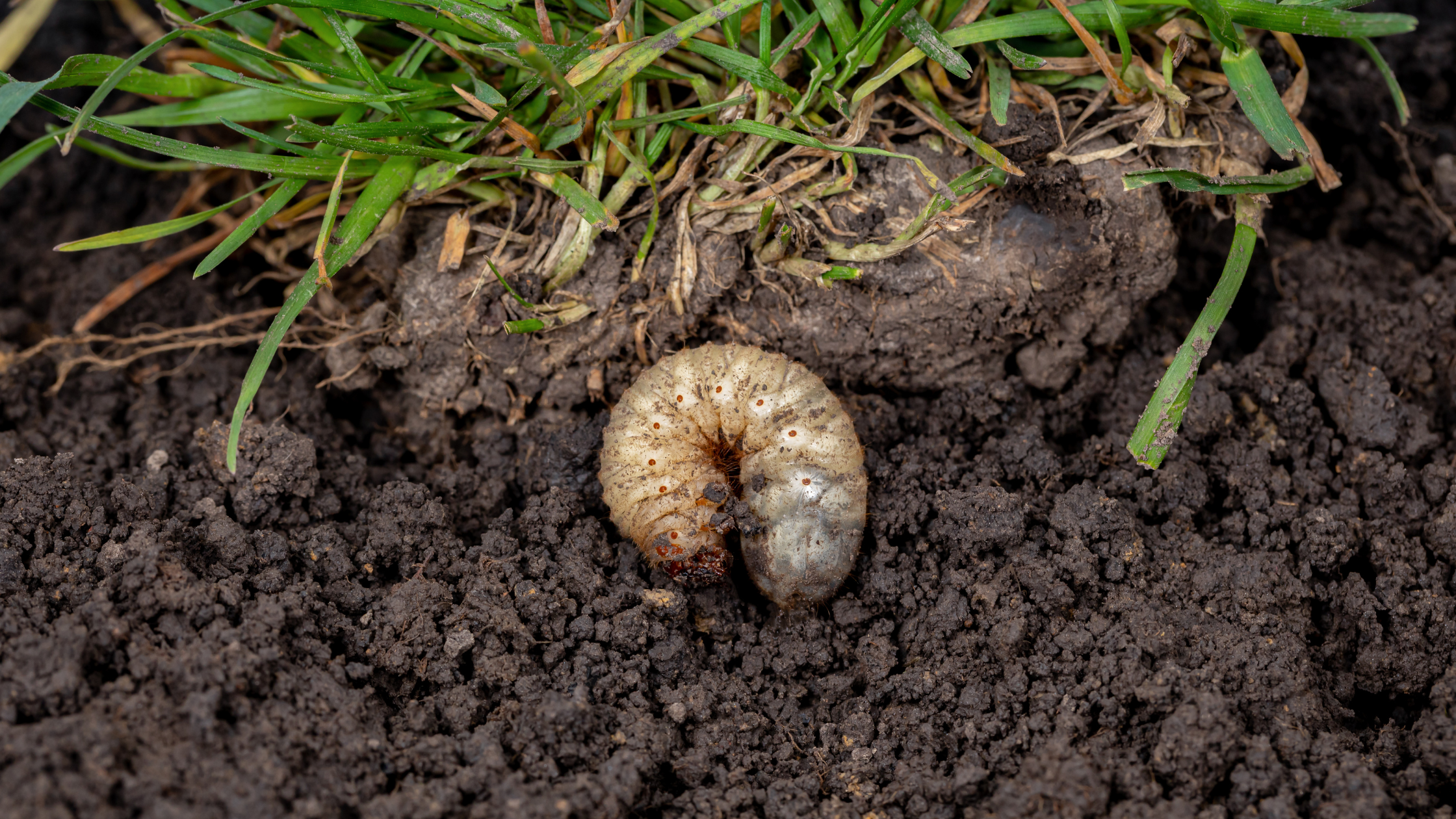In our industry, the word “turf” actually refers to both the grass and the soil held together by its root system. In this context, turf is actually an ecosystem in itself and is home to a lot more life than you might realize. Some of that life is incredibly beneficial. Plenty of microbes, fungi, and bacteria play crucial roles in both soil health and plant biology, not to mention beneficial larger organisms like earthworms. Other organisms, such as grubs, pose a risk to the health and vitality of your lawn if they reach critical levels.
As is the case for weeds, the best way to control harmful insects is to treat them proactively and prevent them from becoming an issue. At Mainely Grass, our Grub and Surface Feeding Insect Preventative does just that and more. It also acts like an insurance policy. If you get our preventative service but still suffer from grub or insect damage, we will treat the issue and re-seed the damage for free.
White Grubs
Commonly referred to simply as “grubs”, these are the larvae of pests such as the Japanese Beetle, European Chafer, and Oriental Beetle. Regardless of species, all grubs have a highly recognizable ‘C’ body shape with legs only towards their head. Grubs pose a risk to your lawn when they borrow towards the surface to feed on the roots. This can sometimes happen in the early spring when soil temperatures are warmer at the surface, but is most common in the summer and fall when new larvae hatch.
Like most insect damage, visual indications of an issue can look similar to disease or drought stress because the grass will begin to turn brown. You may also see animal predators like skunks and crows digging up your lawn to reach the grubs for a meal. Unfortunately, neither of these signs are conclusively grub related. The best way to identify grub damage is the “tug test”. Because grubs feed on the roots, affected areas will no longer be secured to the soil and can be easily pulled up like a carpet. If you can pull sections of your lawn up like a carpet, you likely have an infestation.
Chinch Bugs
Usually found in the summer months during hot, dry periods, we have started to see Chinch Bug activity in the spring of 2021‒potentially a holdover from the extreme drought we experienced in 2020. Chinch Bugs are very small (adults are about the size of a pencil tip!) surface-feeding insects best identified by their black bodies with a white hour-glass design on their backs. They feed on grass close to the thatch by sucking the juices from the plant while injecting a toxin into the tissue at the same time.
The turf will turn yellow at first, before eventually turning brown and dying. As the grass dies, Chinch Bugs move to the perimeter of the affected area to feed on healthier plant matter. This gives the look of a growing brown patch that can easily be misdiagnosed as drought stress, especially because infestations often occur in the sunniest parts of your lawn. The only way to identify Chinch Bugs is to get down into the thatch and look closely for them. Sometimes, slapping the turf disturbes them enough to scurry around making them easier to identify. If you see our Technicians on their hands and knees slapping your lawn, don’t worry, they are looking out for you and your grass!
Sod Webworm
Like many insects, the adult form (in this case, a moth) is not of concern. Instead, the larvae of the Sod Webworm are caterpillar-looking and can grow up to an inch long with greenish, brown bodies and dark spots. These larvae feed on the foliage of the grass‒chewing the blades just above the crown‒at night and lay curled up in the lawn during the day. Because whole blades can be cut off, this gives the presentment of aggressively thinning turf. It will also turn yellow in patches before turning brown and dying. In addition to looking for larvae in the thatch during the day, the presence of moths flying low over the grass‒especially in the evening‒could be an indication of future problems.
Billbug
Adult Billbugs are a type of Weevil and their larvae can look similar to grubs except they have no legs and their bodies lack the typical ‘C’ shape associated with Grubs. Billbug damage presents as wilting followed by browning in patches starting in the early summer. This can easily be confused with drought stress, but the big difference is that your lawn will not respond to irrigation in this case. To identify Billbug damage, pull on the affected area. It will break off at the soil line with a frayed, sawdust-like appearance.
Treatment & Prevention
No matter the insects that may infest your turf, there is one common thread when it comes to treatment, prevention is best. Get ahead of the problem with our Grub & Surface Feeding Insect Preventative which has been specifically developed to target these pests before they become a problem.
